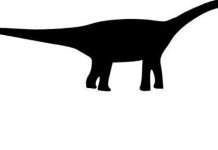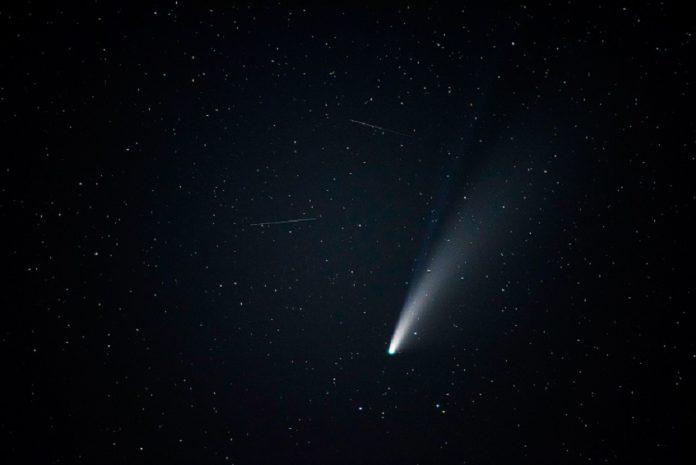Of the several comets discovered in 2021, the comet C/2021 A1, called Comet Leonard after it’s discoverer Gregory Leonard, may become visible to the naked eye on 12 December 2021 when it comes closest to the Earth (at the distance of 35 million km), possibly for the last time, before it approaches Venus much more closely on 18 December coming closest to Sun on 3 January 2022.
Comets are small celestial bodies, icy leftovers from the early phases of the forming of the outer planets, orbiting around the sun in elliptical orbits. In a comet’s orbit, perihelion is the point when it is nearest the Sun while aphelion is the farthest. When in the inner solar system closer to perihelion, comets emit particles and gases on being heated by solar radiation producing the characteristic tail.
Currently, about 3775 comets are known in the Solar System.
Depending on time taken in completing a full revolution of the Sun, comets are either Long-period comets or Short-period comets. Short-period comets complete a full revolution around the sun within 200 years (e.g., Comet Halley takes 76 years to complete one full revolution of sun) hence also referred as Near-Earth Comets (NECs). Such comets are watched closely because of their potential to cause damage to Earth.
The comet C/2021 A1 (Leonard) is a long period comet discovered by Gregory Leonard on 3 January 2021. Its Orbital period is about 80,000 years meaning it completes one revolution around Sun in about 80,000 years. So, next time it will come close to Sun after 80,000 years from now which makes this unique opportunity.
On 12 December 2021, the comet Leonard will be 34.9 million km (0.233 AU; one astronomical unit AU is the mean distance between the Earth and our sun. An AU corresponds to 93 million miles or 150 million km or 8 light-minutes) from Earth.
Subsequently, it will approach Venus at a much closer distance to within 4.2 million km (0.029 AU) on 18 December 2021. Less than two days later, it will graze Venus with its dust tail. Finally, it will be on its perihelion i.e., closest to Sun on 3 January 2022.
Not sure if it will return but if it does, it will be 80,000 years from now when one may see it again.
***
Sources:
- Zhang Q., et al 2021. Preview of Comet C/2021 A1 (Leonard) and Its Encounter with Venus. The Astronomical Journal, Volume 162, Number 5. Published 2021 October 13. DOI: https://doi.org/10.3847/1538-3881/ac19ba
- NASA Astronomy Picture of the Day https://apod.nasa.gov/apod/ap211203.html
***




































